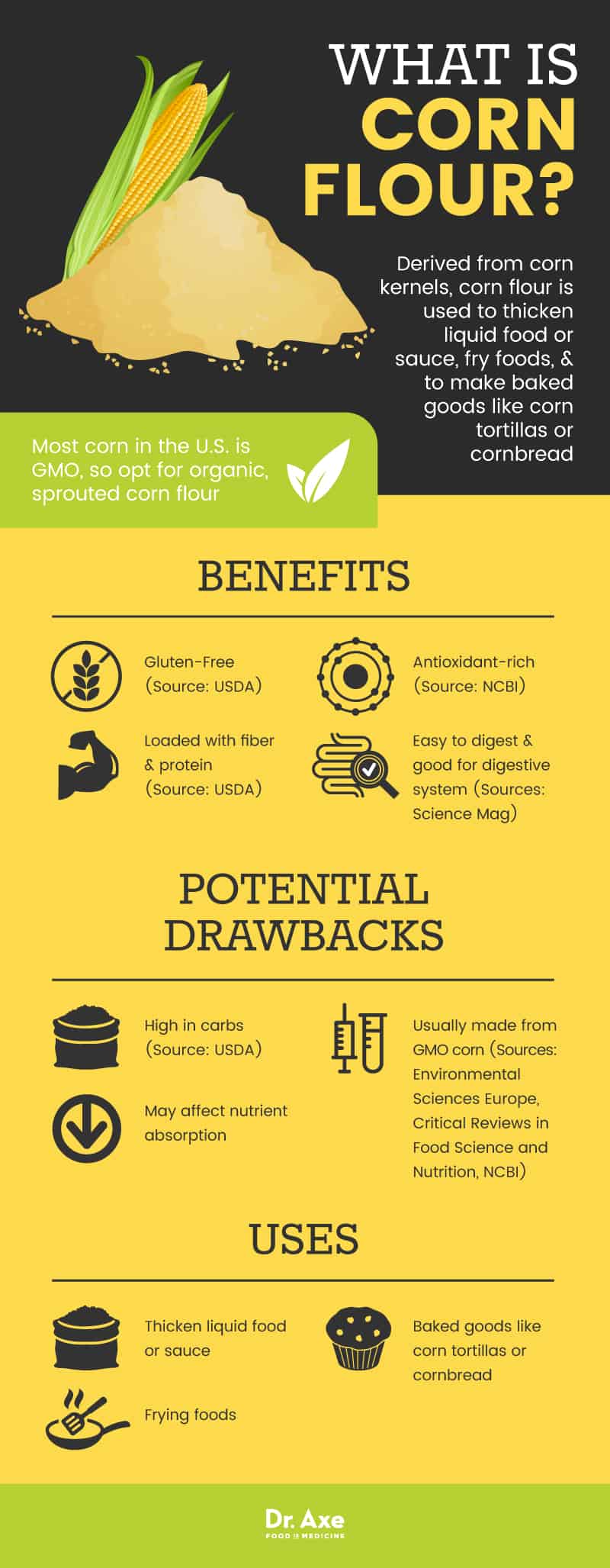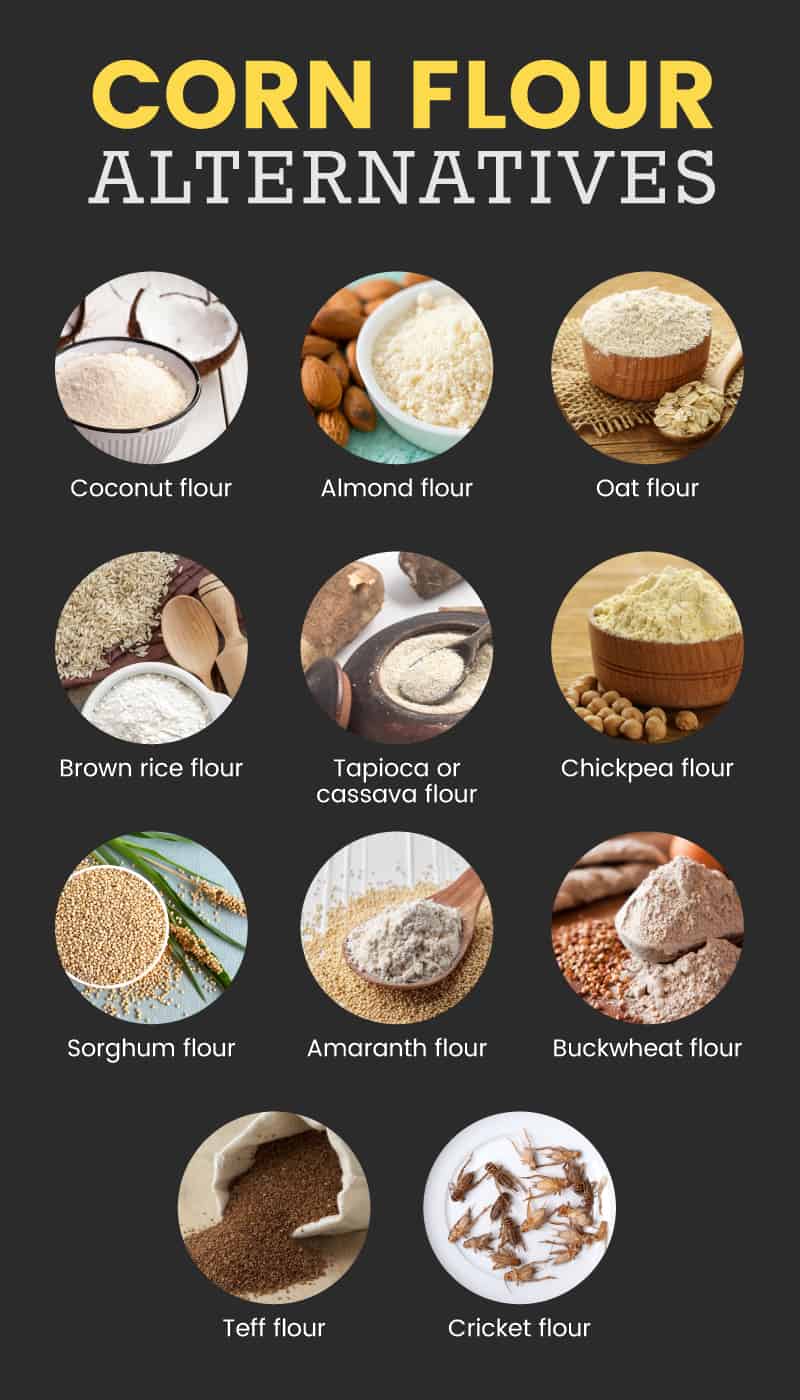This Dr. Axe content is medically reviewed or fact checked to ensure factually accurate information.
With strict editorial sourcing guidelines, we only link to academic research institutions, reputable media sites and, when research is available, medically peer-reviewed studies. Note that the numbers in parentheses (1, 2, etc.) are clickable links to these studies.
The information in our articles is NOT intended to replace a one-on-one relationship with a qualified health care professional and is not intended as medical advice.
This article is based on scientific evidence, written by experts and fact checked by our trained editorial staff. Note that the numbers in parentheses (1, 2, etc.) are clickable links to medically peer-reviewed studies.
Our team includes licensed nutritionists and dietitians, certified health education specialists, as well as certified strength and conditioning specialists, personal trainers and corrective exercise specialists. Our team aims to be not only thorough with its research, but also objective and unbiased.
The information in our articles is NOT intended to replace a one-on-one relationship with a qualified health care professional and is not intended as medical advice.
Corn Flour: The Pluses & Minuses of This Gluten-Free Flour
January 4, 2018

In our gluten-free diet world, it’s easy to get tripped up by the number of options. What’s actually good for me? Which alternatives are better left on the grocery store shelf? Corn flour is a gluten-free option that you should know about.
There are some caveats — it shouldn’t always be your first choice — but if you buy the right kind, you can take advantage of a gluten-free option that doesn’t compromise on taste. Whether you’re gluten-intolerant or just want to expand your nutritional horizons, read on to find out more.
What Is Corn Flour?
As I’m sure you’ve guessed from the name, corn flour is derived from corn kernels. There are a number of ways to make corn flour — some people even make it at home — but they do differ in nutritional value. Sprouted or fermented corn retains more nutrients than dry-milled varieties used to make corn flour. (1)
Corn flour, not to be confused with other ground corn products, is used to thicken liquid food or sauce, fry foods, and to make baked goods like corn tortillas or cornbread.
Cornmeal vs. Cornstarch/Cornflour vs. Corn Flour
When it comes to ground corn, there are some semantics to be aware of — they’re important, because you will end up with some disastrous (or at least strange) recipes if you confuse them.
Cornmeal: This is the roughly ground corn product most people use in cornbread. Cornmeal doesn’t involve the separation of bran, germ and endosperm, so you are able to retain more of the nutrients in the corn than with, say, cornstarch. Some people also use the word “polenta” to refer to cornmeal, although polenta is actually a dish using medium-grind cornmeal, not a standalone ingredient. (2)
Cornstarch/Cornflour: Cornstarch is a gluten-free, processed corn product in which the endosperm is separated from the germ and bran and then ground into a white powder. Many people use cornstarch/cornflour to thicken sauces. (3) In the U.S., this product is referred to as cornstarch or corn starch. In Britain, the same product is known as cornflour (one word). It’s gluten-free, but it’s essentially devoid of nutrients, so I tend to recommend arrowroot instead, which is an easily digestible substitute that has some pretty cool health benefits.
Corn Flour: Yes, it’s a little inconvenient, but corn flour (two words, not one) is actually a very finely ground version of cornmeal, meaning that it contains the entire kernel. (4) You can also use this to thicken liquids, but the majority of uses include baked goods like tortillas or bread products (you can use it combined with other flours to make pizza crust). Corn flour is generally available in white and yellow corn varieties. If you’re looking to make tortillas, you’ll need to get a specific time of corn flour called masa harina, which has been soaked in a limewater solution.
Related: Impressive Corn Silk Benefits for Inflammation, Cholesterol & More

Is Corn Flour Healthy?
To answer that question, we first need to determine the nutritional value of corn. It’s a trickier question than you might think, because it really matters what kind of corn we’re talking about.
Organic, sprouted corn can actually be surprisingly good for you. Sprouting is the process of soaking grains for a period of time before baking to rid them of the antinutrient phytic acid.
It’s got a ton of antioxidants, fiber and resistant starch (which you need to support healthy digestion). There are phytochemicals in organic, sprouted corn that can support various parts of the body.
However, Americans typically consume an overabundance of corn products in the form of cornstarch and, most concerningly, high fructose corn syrup, which hold no benefit — plus, high fructose corn syrup is associated with things like cancer, fatty liver, high cholesterol, diabetes, high blood pressure, heart disease and leaky gut syndrome.
Almost all the corn in the U.S. is genetically modified and sprayed with dangerous pesticides, which is one reason I steer clear of corn and its products most of the time. I’ll discuss more of that in just a moment.
If you’re talking about organic, sprouted corn, though, I’m a fan. I don’t necessarily think it needs to be a staple of your diet, but corn flour made from such can be a great addition to a healthy diet (gluten-free or otherwise).
Corn Flour Nutrition Facts
Serving sizes for corn flour vary a lot, since it all depends on what you’re making. For this example, I’m going to stick to about the amount of corn flour in two small corn tortillas. A ¼ cup of organic, sprouted yellow corn flour contains: (5)
- 105 calories
- 22.5 grams carbohydrate
- 2 grams protein
- 1 gram fat
- 2 grams fiber
- 0.7 milligram iron (4 percent DV)
- 63 IU vitamin A (1 percent DV)
Keep in mind that processed corn flour (not organic) is enriched with other minerals not found in organic varieties. (6)
Corn Flour Benefits
- Gluten-free
- Loaded with fiber and protein
- Antioxidant-rich
- Easy to digest and good for the digestive system
1. It’s Gluten-Free
Corn flour is a gluten-free alternative to white/wheat flour and can be used to thicken gravies or make tortillas and other baked goods without using inflammatory gluten. Since inflammation is at the root of most diseases, eliminating or minimizing inflammation-causing foods from your diet can help you prevent disease and improve your quality of life.
2. Contains Lots of Fiber and a Decent Amount of Protein
One cup of this flour fulfills up to a third of daily fiber goals for many and provides a nice amount of the protein you should hit each day, so dishes you make with it are going to fulfill some of those baseline requirements. If you’re following a vegan diet or similar, protein can sometimes be a challenge, which makes corn flour a particularly good option.
3. Has Great Antioxidants
One of the surprising benefits of organic corn is the high level of disease-preventing antioxidants it contains. Unprocessed corn has a much higher level of polyphenols (a specific type of antioxidant) than similar processed grains, known as cereal grains. (7) You can fight free radical damage racked up by processed foods, toxin exposure and even too much time in the sun by consistently eating foods high in these compounds.
4. Easy to Digest and Good for Your Digestive System
Corn contains amylose, cellulose, lignin and hemicellulose, which are known as insoluble fibers. (8) Proper digestion involves a balance of soluble and insoluble fibers. Insoluble fibers like those found in corn are able to ferment in the colon and support a diverse microbiome, which researchers are beginning to realize in the last several years has a massive impact on your overall health (and digestion, in particular). (9)

Potential Dangers of Corn Flour
- Usually made from GMO corn
- May affect nutrient absorption
- High in carbohydrates
1. Usually Made from GMO Corn
Did you know that corn is the No. 1 crop grown in the United States? Of all of the corn grown here, 88 percent of it is genetically modified. The only crop with a higher GMO percentage is soy. (10)
The issue of GMO foods is a complex one. Bottom line: Does it matter that you may be eating GMO corn-derived products? Yes, it absolutely matters — GMO corn treated with Monsanto Roundup (a pesticide) has been linked to liver and kidney disease in mammals as well as potential issues with the pancreas, reproductive, endocrine and immune systems. (11, 12, 13)
Overall, the scientific community has become increasingly concerned about the limited amount of evidence regarding the safety of GMO corn and Roundup used to treat it, particularly because the vast majority of “positive results” come in studies sponsored by Monsanto and related companies, while other studies use relatively small sample sizes and short time periods too brief to observe most tumor-related, reproductive or endocrine effects.
How can you avoid GMO corn in your corn flour? Easy: Buy organic, sprouted varieties. My favorite is organic sprouted yellow corn flour from Sprouted Flour Co.
2. Could Affect Nutrient Absorption
Have you ever heard of phytic acid? If not, you need to understand what it is — in grains and legumes, phytic acid binds to certain nutrients (the compound of phytic acid plus a nutrient is referred to as “phytate”) and inhibits your body from absorbing and using those nutrients.
That means that the nutrition label might read well and let you know you’re eating a great deal of vitamins and minerals, but if you are consuming them without dealing with the phytic acid, you’re probably not truly getting a lot of those nutrients.
Don’t throw out your whole pantry yet, though. Everybody consumes phytic acid in some quantity or another, and there is also some evidence that it can benefit the body by aiding in prevention of certain chronic diseases. It all goes back to balance.
Fortunately, dealing with phytic acid is not impossible. Soaking or sprouting grains is a great way to separate those molecules and take full advantage of the nutrients found within, which is why I always recommend sprouted corn flour.
3. High in Carbohydrates
Let me start by saying: Carbs are NOT the devil. You need them to survive and should generally make up about 40 percent of your calories per day (for an active individual). Generally, that tops out around 200 grams of carbs per day. Many people find that lowering carbs to around 120 can help them shed some unwanted pounds, so that 120–200 range is generally a good place to stay.
With two small corn tortillas, you’re already over 10 percent of your way through that number. They may be gluten-free, but corn tortillas (or any product made with corn flour) are going to be heavy on the carbohydrates. For proper functioning and to maintain a healthy weight, staying at or under that top number will serve you well, so pay attention to the carbs you’re consuming and work to balance those “macros,” or the percentages of carbs to protein to fat. And, let’s be honest, who only eats two tacos?
More recently, attention has turned to the several-decades-old keto diet, which focuses consuming high amounts of healthy fats, moderate protein and low carbohydrates. If you’re trying to lose weight fast, that’s an option that will more than likely work best, versus trying to just eliminate gluten but still loading up on carbs.
Corn Flour Alternatives
If you’re working on going on a totally grain-free diet or just want to see what other healthy baking options you’ve got, there are a good number of gluten-free flours other than corn flour you may want to try.
Coconut Flour: This one is my favorite healthy flour. Utilizing many of the benefits of coconut, this flour produces a dense but soft final product, as it absorbs a lot of water. Try checking out some of coconut flour recipes if you’re curious about how I like to use it.
Almond Flour: Super popular on the ketogenic diet, this flour contains good, healthy fats and boasts some crazy benefits like supporting the heart and potentially lower your risk of colon cancer. This can help to create a less dense baked item, but it doesn’t rise like wheat or white flour and generally requires more of your binding agent (e.g., eggs). You can use it to make some delicious almond flour pancakes if you’re ready to give it a go.
Oat Flour: Natural oats are gluten-free, and not only can they be easily digested, but they also aid in managing cholesterol levels and boosting immunity. Stick to organic, sprouted oat flour, though.
Brown Rice Flour: While I typically prefer sprouted flours, brown rice flour can provide you with some valuable nutrients and is a great option for creating gluten-free pasta, since it’s probably the closest substitute to normal pasta of all the gluten-free flours.
Tapioca or Cassava Flour: Both of these originate in the tapioca plant but are derived from the plant differently. Cassava flour is less processed, but tapioca flour thickens better than its counterpart. Cassava is also high in carbs but hailed as many as the “closest” substitute for white/wheat flour.
Chickpea Flour: Made from chickpeas (garbanzo beans), chickpea flour contains a great balance of nutrients, including folate.
Sorghum Flour: This heavy flour is best used in recipes that call for a small amount of flour or in combo with other, lighter flours. It’s packed with antioxidants and helps balance blood sugar and reduce disease-causing inflammation.
You can also try your hand at amaranth flour, buckwheat flour (which is also gluten-free), teff flour … or, if you’re being adventurous, cricket flour!

Corn Flour Recipes
The most popular corn flour recipe is for corn tortillas. Keep in mind that traditional corn tortillas call for masa harina, a particular kind of corn flour.
If you want to try something a bit sweeter, check out this recipe for wheat-free sponge cake, using only corn flour, eggs and sugar. Of course, I recommend replacing the sugar with a different sweetener, such as a stevia baking blend.
For a side dish that’s not quite a dessert, you may also like these corn cakes. Remember to stick to only organic corn, and use raw milk and butter instead of the pasteurized kinds.
If you’re really feeling cornbread but have decided to steer clear of all corn products, you can always try my gluten-free cornbread recipe that uses cassava flour instead of corn flour.
Precautions
I can’t stress enough how important it is to get only organic, sprouted corn flour. I never advise using conventional corn flour because of the dangers of GMOs and associated pesticide contamination, so if that’s your only option, I would say to try something else entirely.
Some people, particularly those with issues such as SIBO or IBS, may have trouble with insoluble fibers like those found in corn, because they may not make it all the way to the colon where they are meant to ferment.
Allergies to corn are rare, but if you have a sensitivity or allergy to corn, avoid corn flour and go for something rarely allergenic, like brown rice flour.
As I said before, health is a balancing act. With the high carbohydrate count in corn flour, I wouldn’t recommend you use it every day or as your main baking flour. However, it can make for a nice addition to your cooking and baking, especially in certain ethnic dishes that need that gentle corn flavor.
Final Thoughts
- Corn flour is a corn-derived, whole kernel product used in thickening liquids, frying and baking.
- As a gluten-free option, corn flour is a common go-to product to nix gluten.
- One of the biggest issues is not corn flour itself, but the corn it comes from — almost 90 percent of corn in the U.S. is genetically modified and sprayed with Roundup, a very dangerous pesticide linked to a number of health concerns. Avoid corn flour unless you’re using an organic variety.
- Corn flour is generally easy to digest, contains valuable antioxidants, and can provide decent amounts of protein and fiber, making it a good option for a fairly nutrient-dense flour.
- Because corn contains phytic acid, it is possible that your body can’t absorb the nutrients the flour contains. However, if you purchase sprouted corn flour, the phytic acid is reduced as much as possible. (My favorite is organic sprouted yellow corn flour by Sprouted Flour Co.)
- In addition to corn flour, there are some other great gluten-free alternatives to white/wheat flour that you should try, including coconut flour, almond flour, cassava flour and more.

